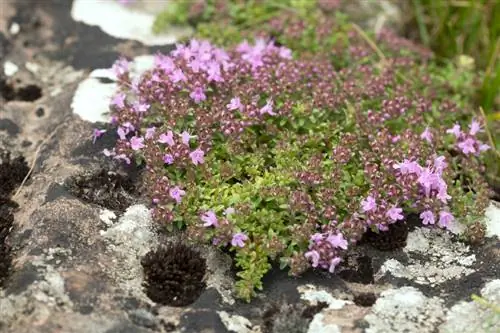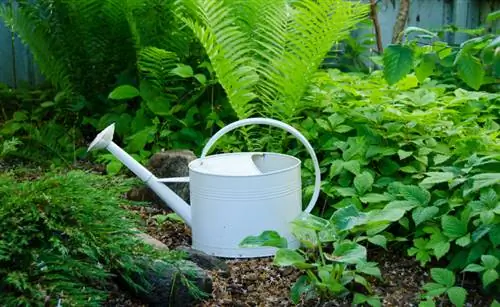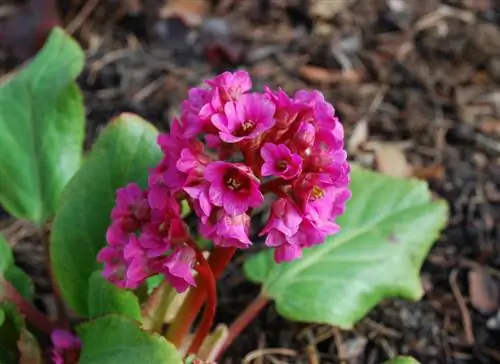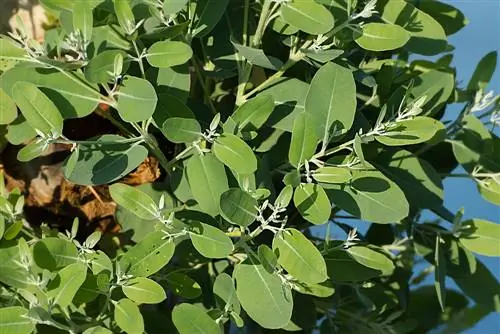- Author admin [email protected].
- Public 2023-12-16 16:46.
- Last modified 2025-06-01 06:02.
In theory, caring for thyme is actually quite simple: it has to be kept warm and dry, it shouldn't have too much water or nutrients, etc. Basically, the plant takes care of itself. In practice, Mediterranean herbs, Like thyme, it is also not so easy to handle - the subshrub is quite sensitive and will quickly take offense at even minor care mistakes.
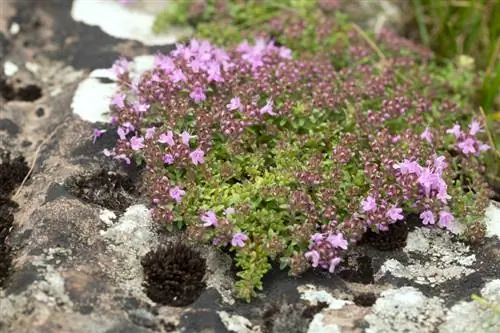
How do you care for thyme properly?
To care for thyme optimally, you should water sparingly when the top layer of soil has dried out, ensure adequate drainage, cut the plant in spring, do not fertilize after July, and, depending on the variety, take protective measures for the winter move to the cold house.
How often should you water thyme?
As with all Mediterranean herbs, the same applies to thyme: water carefully and with a sense of proportion! The plant responds to excessive moisture and especially waterlogging with rotting roots and ultimately their death. Strictly speaking, planted thyme does not need to be watered at all - its deep and widely branched roots take care of themselves even in dry periods. You can only water your thyme a little occasionally in very hot summer months, when the soil is already threatening to dry out. Potted thyme, on the other hand, needs regular watering. It is best to water the plant when the top layer of soil in the pot has already dried out.
When and with what should you fertilize thyme?
You should also be very careful when it comes to fertilizing - planted garden thyme basically doesn't need any fertilizer at all, apart from some compost and / or lime at the beginning of the growing season. Potted thyme is supplied with diluted complete fertilizer (€19.00 on Amazon) about every six to eight weeks. However, make sure not to fertilize the plants - whether in pots or in the garden - from July onwards.
Do you have to cut thyme?
The subshrub thyme becomes woody as it gets older - which in turn leads to baldness, because fresh shoots no longer grow from the woody parts of the plant. For this reason, thyme should be pruned twice a year. The strong topiary is best done in spring, although you should under no circumstances cut into the old wood - instead leave about two to three centimeters of green wood. Further pruning care takes place during the harvest.
My thyme looks sickly - what could it be and what should I do about it?
It is often complained that thyme turns brown and dies after a while - the plant looks more or less dried out. Don't make the mistake of watering the supposedly dry thyme! The plant usually dies due to waterlogging, whereby the roots rot and can no longer supply the above-ground parts of the plant with sufficient water. In this case, you can often save your thyme by moving it to a new pot with fresh substrate (or digging it up again in the garden and treating the soil accordingly, e.g. mixing it with sand and pottery shards). A root cut should be made, i.e. H. You cut off the rotting roots with the help of a sharp, clean knife. Gray mold also often occurs when it is constantly wet. On the other hand, thyme that has been overwintered indoors or in a greenhouse often has to contend with spider mites - these can be prevented by providing sufficient humidity.
Overwinter thyme properly
The best way to overwinter your thyme depends on the variety - some types of thyme are hardy, others are not. You can leave real thyme in the garden in winter and cover it with sticks or protective mats, but more sensitive species should overwinter in cold house conditions.
Tips & Tricks
Blooming thyme attracts bees, bumblebees and butterflies. With thyme, lavender and all sorts of wild herbs and flowers you can create a great bee pasture in your garden.

